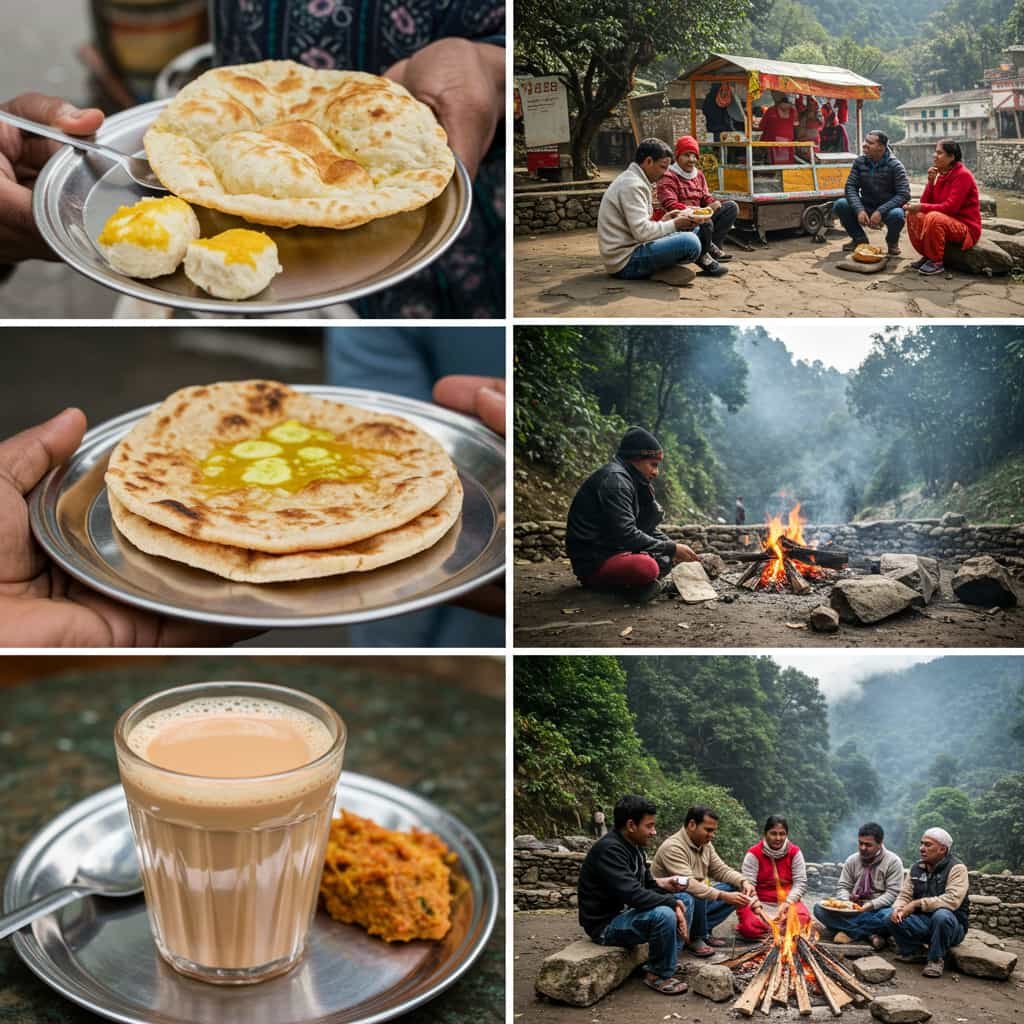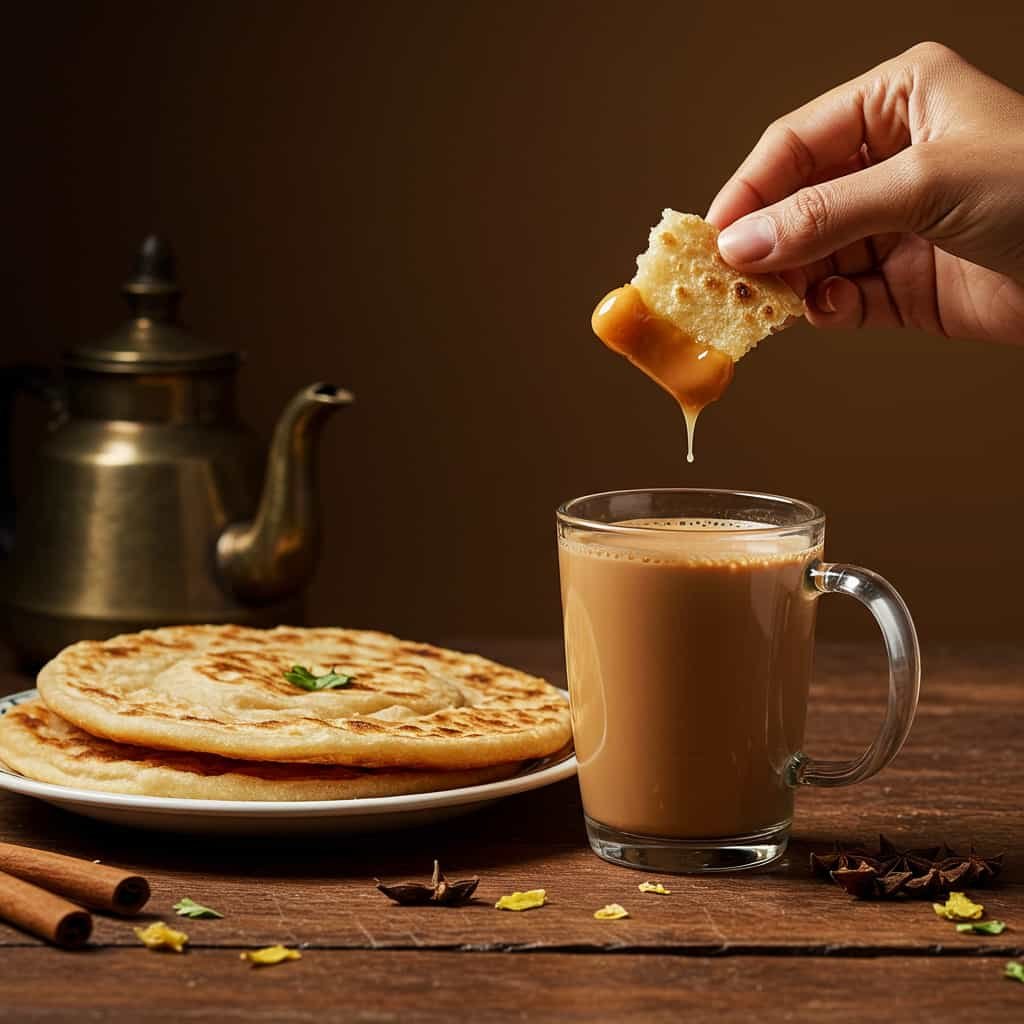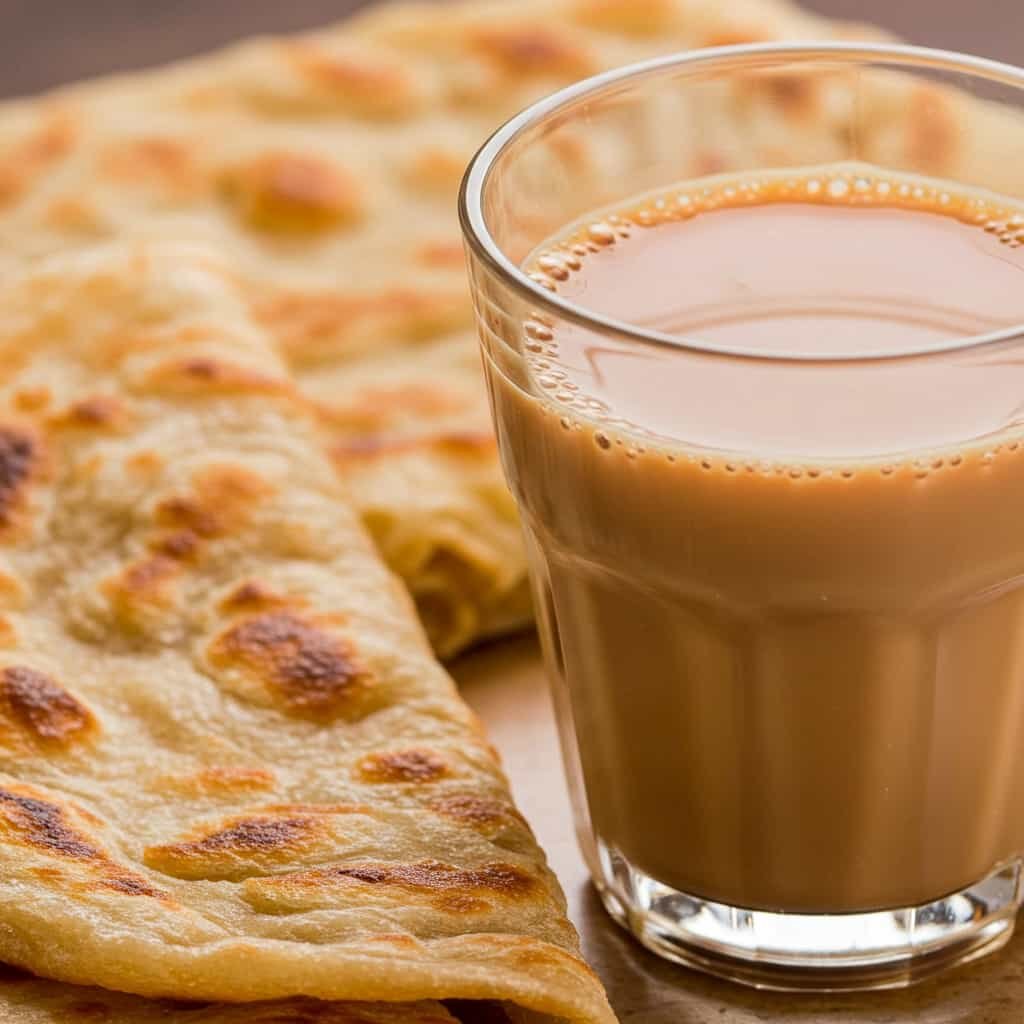The Heartbeat of South Asian Homes
There’s a sacred rhythm in South Asian households that transcends generations: the sizzle of golden roti on the tawa harmonizing with the bubbling melody of simmering chai. Roti Chai isn’t just sustenance—it’s a cultural handshake, a moment of pause, and a daily ritual that nourishes both body and soul. This iconic pairing weaves together humble flatbread and aromatic spiced tea into a tapestry of comfort, community, and culinary heritage.
Join us as we unravel the stories, techniques, and secrets behind this timeless duo. For more food traditions, explore inFoodBlog—your gateway to authentic global cuisine.
The Roots of Ritual – A Historical Embrace

Roti Chai’s origins reflect South Asia’s agricultural and colonial past:
-
Roti: Born 5,000 years ago in the Indus Valley, roti was the staple of farmers and laborers. Its simplicity (whole wheat, water, fire) symbolized sustenance and resilience.
-
Chai: Introduced by British tea plantations in the 1800s, Indians transformed bland black tea into masala chai—infusing ginger, cardamom, and spices to create a healing elixir.
-
The Pairing: Post-independence, roti and chai became the working-class breakfast, uniting communities across India, Pakistan, Bangladesh, and Nepal.
🔍 External Reference: Explore chai’s evolution on Wikipedia’s Masala Chai page.
The Anatomy of Perfect Roti Chai

The Roti: Simple Mastery
Authentic roti balances tenderness and structure:
-
Ingredients: Just atta (stone-ground whole wheat), water, salt.
-
Technique: Kneaded until elastic, rested, rolled thin, and dry-roasted until puffed.
-
Texture: Soft yet sturdy—ideal for dipping into chai.
💡 Internal Link: Master the craft with our guide: What Is Roti? Origins, Types, and How It’s Made.
The Chai: Spiced Alchemy
Traditional masala chai layers six key flavors:
-
Black Tea: Assam or Ceylon for robustness.
-
Spices: Ginger (heat), cardamom (floral), cloves (warmth), cinnamon (sweetness), black pepper (bite).
-
Milk: Buffalo or whole milk for creaminess.
-
Sweetener: Jaggery or sugar.
Brewing Secret: Simmer spices first to extract oils, then add tea and milk.
Regional Variations – A Subcontinental Journey

Roti Chai adapts to local terroirs:
| Region | Roti Style | Chai Twist |
|---|---|---|
| Punjab | Thick, buttery Makki di Roti | Adrak (ginger)-heavy chai |
| Mumbai | Quick-fried Rumali Roti | Cutting Chai (half-portions) |
| Dhaka | Puffed Luchi | Cardamom-sweetened cha |
| Karachi | Flaky Paratha | Elaichi chai with saffron |
🔍 External Reference: Discover India’s culinary diversity via Wikipedia’s Indian Cuisine.
Cultural Significance – More Than a Meal

Roti Chai embodies:
-
Hospitality: Offered to guests as a welcoming gesture.
-
Community: Shared in street stalls (tapris) during monsoon rains.
-
Resilience: A symbol of simplicity during hardship.
-
Modern Revival: Baristas reimagining “chai lattes,” chefs pairing roti with global dips.
Health & Wellness – Nourishment in Every Sip and Bite

Roti’s Benefits:
-
High in fiber (digestion)
-
Low glycemic index (blood sugar control)
-
Vegan-friendly
Chai’s Benefits:
-
Ginger: Anti-inflammatory
-
Cardamom: Aids digestion
-
Black tea: Rich in antioxidants
⚠️ Moderation Note: Limit sugar for optimal benefits.
FAQs: Roti Chai Demystified
Q: Can I make roti gluten-free?
A: Yes! Substitute atta with millet or sorghum flour.
Q: Why crush spices for chai?
A: Releases essential oils for maximum flavor.
Q: Is chai caffeinated?
A: Yes, but less than coffee. Opt for decaf tea if sensitive.
Q: Can I freeze roti dough?
A: Absolutely—portion balls, freeze for up to 3 months.
Embrace the Ritual

Roti Chai is where tradition meets tranquility—a daily invitation to slow down, connect, and savor life’s simplest joys. Whether you’re kneading dough at dawn or sharing chai under monsoon skies, this pairing is a love letter to South Asian heritage.
Craving more culinary wisdom? Dive into recipes, cultural deep-dives, and kitchen hacks at inFoodBlog.



